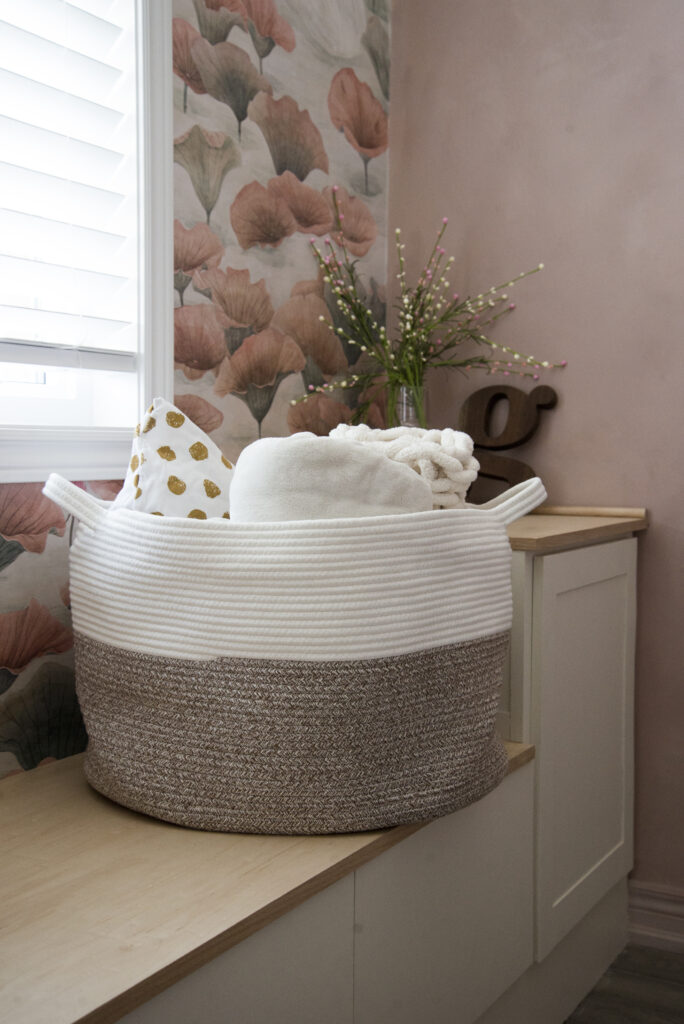There’s something so comforting and enjoyable about sitting down and eating a plate of fresh pasta. The way the noodles hold on to the sauce and satisfy with every bite. Mmm, I’m getting hungry now just thinking about it! I grew up spending the weekends at my Noni’s house (grandma and grandpa), and it wasn’t spent doing cute crafts together. I would tag along on all their chores, from taking care of their HUGE garden, to helping them prep dinner and make batches of fresh pasta, which we would then freeze for future use. It really is so simple that even as a young kid, with my Noni’s guidance, I could make pasta. So now I’m here to help you do the same. Consider me your digital Nonna!
If you’ve never made your own homemade noodles before, you might be intimidated at the thought. I‘m here to tell you that you don’t have to and shouldn’t be! If you can roll out cookie dough to cut shapes out, or even if you have never baked before, I promise you can do this!
What tools do I need to make Fresh Pasta?
The honest to goodness answer, is none. Yes, it’s great to have a pasta maker, but the same can be achieved with a rolling pin. Don’t have a rolling pin either? Then a wine or beer bottle/can will do the trick for you! You also don’t need a mixer. Again, you can chose to use one if you’d like, but I was taught to do it with my hands and I intend to teach you the same. With the exception of a fork and a knife, which really cannot be called tools, the only thing you need are your hands and a desire to learn a new skill.

A Rolling Pin and Freshly Rolled Pasta
Why does the pasta have to rest?
Once the dough is kneaded well, you will be wrapping it in cling wrap and leaving it to rest for at least 4 hours (if you’re in a rush you can let it rest for less time, but the results won’t be quite as good). The reason for allowing it to rest lies with the gluten factor. When dough is kneaded, the gluten strands within it become longer and stronger. This creates an elastic texture, which makes it very difficult to roll out and quite tough and chewy to eat. Resting the dough allows the water to be absorbed into the flour, which in turn makes the gluten strands relax. This creates a strong, pliable dough that can be rolled out well. Tip: The more yolk in the dough, the longer it will need to rest. Pasta made with only yolk and no whites should rest for 6 hours.

Tightly Wrapped Ball of Fresh Pasta Dough, Ready to Rest
Why should I mix cooked pasta with sauce and allow to sit before serving?
Just like cooking meat, pasta is best when it is given time to rest with it’s sauce before serving. The starch water left on the pasta from cooking will help the sauce thicken and stick to the noodles, instead of sliding right off and getting soupy in your plate. This means that every bite will be full of not only your delicious hand made noodles, but also the sauce that tops it off! Win win!

Fresh Pasta Served with a simple Tomato Basil Sauce
Alright, with all that knowledge, let’s make some Fresh Pasta!
Recipe Ingredients:
3 Eggs
2 cups Flour (+1 cup for dusting counter)
Water *if needed
Directions:
- Start by making a mound with 2 cups of flour, then crest a well in the middle (so it looks like a wide opening for a volcano)
- Add eggs into the well
- Slowly mix eggs and flour together, pulling a little flour at a time from the inside of the well, until dough forms. If too wet, add more flour. If too dry, add some water. When ready, the dough should no longer be sticking to your fingers.
- Knead dough with the palms of your hands until mixed well.
- Form dough ball and wrap it tightly with plastic cling wrap.
Rest dough for 4 hours or overnight.
(This allows the dough to rest and not be
tough to roll out). I always leave the
dough on the counter to rest at room
temperature, but for health safety
reasons I suggest putting it in the fridge
if leaving overnight, then bringing to
room temperature when ready to start
the next step.
6. Split the dough into a 3-4 pieces
7. On a well floured surface, roll each piece out until it is very thin (If you have a
pasta machine, use that. If not, use a rolling pin.)
8. Leave flat pieces out to dry, either on a floured counter top or on top of a
tablecloth, turning over every 10 minutes or so. Depending onthe humidity in your
home, this can take anywhere from 30 minutes to a couple hours.
9. When pasta starts to feel dry but still flexible, cut into strips of desired
thickness (or run through pasta machine at desired thickness)
Freezing Fresh Pasta
- Gently take half a handful of your pasta
and loosely coil into a small nest.
2. Place each nest into a baking sheet
3. Once the sheet is full, place in the
freezer. 4. Once pasta is completely frozen, put all
the nests into a ziploc bag or reusable
airtight container. 5. Cook from frozen when ready to use.
To Cook Fresh Pasta:
- Bring a pot of water to a boil and add salt
- Warm up desired pasta sauce in a separate pot while water is heating up
- Add a couple handfuls (or frozen nests) of pasta to the boiling water, stirring often to avoid it sticking together
- Add a 2-3 spoonfuls of sauce to a large serving bowl.
- Let pasta cook for around 4 minutes (slightly longer if from frozen), taking a strand out to test for done-ness (some like their pasta al-dente, others like it cooked through and very soft)
- Remove pasta from water with tongs or a pasta spoon, and add to the serving bowl with sauce, along with a 2-3 more spoons of sauce. Mix to coat the pasta, place a plate or foil on top of the bowl to keep the heat in.
- Repeat cooking a couple handfuls of pasta at a time, adding additional sauce to the bowl as needed. (If you are cooking for 2 people and have a large pot, you can probably get away with cooking your full serving in one shot. When cooking for more than 2 people I suggest cooking a couple handfuls at a time to reduce the likelihood of pasta sticking together in the pot)
- Once all the pasta is cooked and dressed with sauce, mix it well. Make sure to get your spoon/tongs right down to the bottom of the bowl to get all that saucy goodness all over your noodles.
- Serve and enjoy!






You can cut the noodles into small pieces to use in soups and so much more! I hope you enjoy making and eating your fresh pasta, and don’t forget to get your kids involved. They’ll love it!
Follow me on Instagram for more tips and projects while we upgrade our new build house into a cozy home. To never miss a new post scroll on down and subscribe to my page! Feel free to also visit my Etsy page for some Instant Download photography wall art.
Until next time,
Oli




